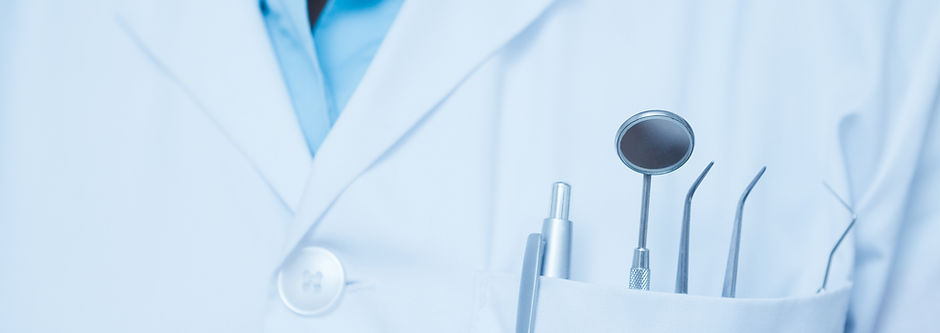What Happens During a Braces Appointment?
- dentalclinicdubai7
- May 5
- 4 min read
If you're starting orthodontic treatment or already wearing braces, you may be wondering what happens during a braces appointment. These visits are an essential part of your treatment journey, ensuring that your teeth are moving correctly and that your Dental Braces are functioning as they should. Whether it’s your first time visiting the orthodontist or a routine adjustment, braces appointments are designed to monitor progress and keep your smile on track.
The Initial Consultation and Evaluation:
The first braces appointment usually begins with a comprehensive consultation. This is where your orthodontist gathers all the necessary information to create a customized treatment plan. Understanding what happens during a braces appointment starts with this important evaluation step:
Dental Examination: Your orthodontist will examine your teeth, bite, and jaw to assess alignment issues.
X-rays and Photos: Detailed images are taken to evaluate the position of teeth and roots.
Digital Scans or Impressions: Your orthodontist may take digital impressions or molds of your teeth to create an accurate treatment plan.
Treatment Discussion: You’ll discuss your options—such as metal braces, ceramic braces, or Invisalign—and go over estimated timelines, costs, and expected outcomes.
This stage lays the foundation for your orthodontic treatment and ensures that the right approach is selected for your specific needs.

The Braces Application Process:
The next major step is when your braces are actually placed on your teeth. This is typically done during your second visit and can take one to two hours. During this braces appointment, your orthodontist will follow several precise steps:
Cleaning and Drying: Your teeth are thoroughly cleaned and dried to ensure strong bonding.
Bonding Brackets: Small amounts of dental adhesive are applied to attach the brackets to each tooth.
Positioning Wires: A metal archwire is threaded through the brackets to connect them.
Adding Ligatures: Tiny rubber bands or clips are used to secure the wire in place.
Once your braces are on, your orthodontist will give you instructions on how to care for them, what foods to avoid, and how to brush and floss properly to maintain good oral hygiene.
Routine Adjustments and Tightenings:
Regular adjustment visits are one of the most important parts of what happens during a braces appointment. These typically occur every 4 to 8 weeks and are designed to keep your treatment progressing steadily. During these appointments, your orthodontist will make modifications to ensure your teeth are shifting as planned:
Wire Adjustments: The archwire may be replaced or tightened to increase pressure on your teeth.
Bracket Checks: Brackets are inspected and re-bonded if they’ve come loose.
Rubber Band Updates: If you’re using elastics to correct your bite, new ones will be provided and repositioned as needed.
Progress Evaluation: Your orthodontist will assess how well your teeth are moving and may adjust the treatment plan accordingly.
These visits are generally quick—usually under 30 minutes—but they are essential to the overall success of your orthodontic treatment.
Managing Discomfort and Oral Care:
After each adjustment, it’s common to feel some discomfort as your teeth begin to respond to the new pressure. Understanding how to manage this part of the process is key to staying comfortable between visits. Here’s what to expect and how to deal with it:
Mild Soreness: Teeth may feel sore or tender for a few days after each tightening.
Orthodontic Wax: This can be applied to brackets or wires that are irritating your cheeks or gums.
Soft Diet: Eating soft foods like yogurt, mashed potatoes, and soup can help minimize discomfort.
Over-the-Counter Pain Relief: Medications like ibuprofen can help reduce soreness if needed.
Good oral hygiene is especially important while wearing braces. Your orthodontist will check your brushing and flossing during each visit and may offer tips or tools to help you improve your technique.
Handling Issues Between Appointments:
Sometimes things don’t go perfectly between visits, and you might wonder what to do. Many orthodontists are available for emergency appointments if something urgent comes up. Here’s what to watch for and how these situations are handled:
Broken Brackets or Wires: These can be temporarily managed at home with orthodontic wax, but should be repaired by your orthodontist.
Lost Rubber Bands: Replacements can usually be picked up or mailed to you.
Pain or Swelling: If you experience unusual pain or inflammation, contact your orthodontist for advice or an emergency appointment.
Knowing what happens during a braces appointment also means understanding how to handle minor issues and when to reach out for help to keep your treatment on track.
The Final Appointments and Retainer Fitting:
As your treatment nears completion, your orthodontist will begin preparing for Dental Braces treatment removal. This is an exciting milestone and one of the final stages of what happens during a braces appointment. Here’s how it typically works:
Assessment for Removal: Your orthodontist will evaluate whether your teeth have reached their ideal positions.
Braces Removal: The brackets and wires are carefully removed, and your teeth are cleaned to eliminate any adhesive residue.
Retainer Fitting: A mold or scan of your teeth is taken to create a custom retainer, which helps maintain your new smile.
Post-Braces Care: You’ll receive instructions on how to wear your retainer and keep your teeth aligned long-term.
Wearing your retainer as instructed is critical to preserving the results of your orthodontic journey. This final stage ensures that all the work done during your braces appointments delivers a lasting, beautiful smile.
In conclusion, knowing what happens during a braces appointment—from your first consultation to your final visit—can help you feel more prepared and confident throughout your treatment. These appointments are designed to guide your teeth into proper alignment while ensuring your comfort, hygiene, and overall oral health remain top priorities.








Comments